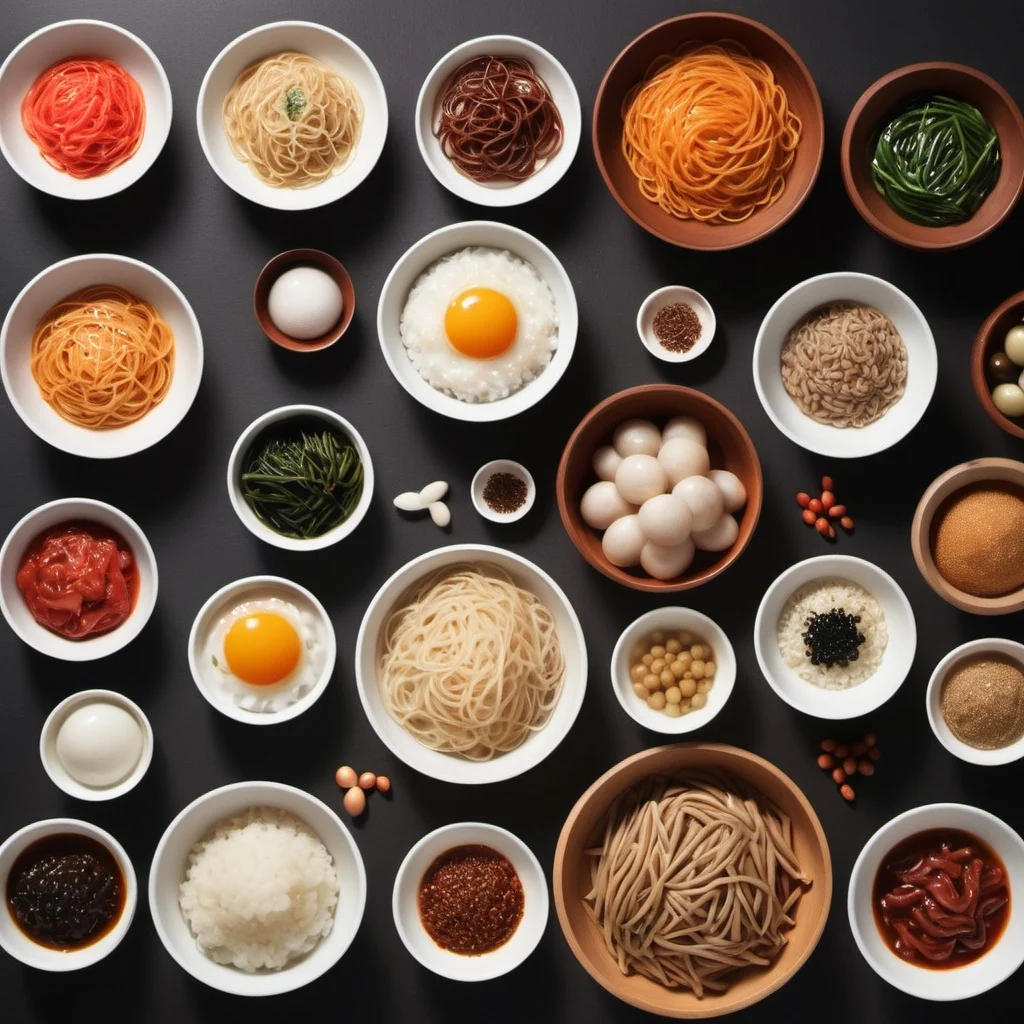These are my essential Korean pantry items that a majority of Korean dishes can be prepared with including a link to my preferred brand(s) for those items. Korean cuisine’s depth and complexity comes from the artful combination of these fundamental pantry ingredients. These core items in my essential pantry form the foundation of countless Korean dishes, from everyday banchan (side dishes) to elaborate stews and marinades, each bringing its own unique characteristics that work together to create the perfect balance of umami, heat, and depth that Korean food is famous for.
| Pantry Item | My Preference |
|---|---|
| Soy sauce (Ganjang) – A foundational fermented condiment made from soybeans that provides deep umami flavor and that rich brown color to Korean dishes. Its versatility makes it essential in marinades, dipping sauces, and as a seasoning agent. | Sempio Soy Sauce Kikkoman Light Soy Sauce |
| Sesame oil (Chamgireum) – This aromatic oil pressed from toasted sesame seeds adds a distinct nutty flavor and is often used as a finishing oil or in marinades. The rich, toasted aroma is particularly important in namul (seasoned vegetable dishes) and is often drizzled over dishes just before serving. | Kadoya Sesame Oil |
| Rice vinegar (Shikcho) – A mild, slightly sweet vinegar that brings necessary acidity to many Korean dishes and pickles. It’s gentler than western vinegars and helps balance rich or spicy flavors while adding brightness to dishes. | Marukan Rice Vinegar |
| Rice wine (Mirim) – Similar to Japanese mirin, this sweet cooking wine adds depth and helps tenderize meat in marinades. It’s particularly good at eliminating gamey flavors in meat dishes and adds a subtle sweetness to sauces. | Kikkoman Aji Mirin |
| Fish sauce (Myulchijeot) – Made from fermented anchovies, this pungent sauce provides an intense umami boost and salty depth to many Korean dishes. While it has a strong aroma, it adds an irreplaceable layer of flavor to stews and marinades. | Three Crabs Fish Sauce O’Food Anchovy Sauce |
| Soup soy sauce (Gukganjang) – A lighter, more delicate variety of soy sauce specifically designed for soups and stews. It provides a cleaner, less intrusive soy flavor that won’t overwhelm or darken clear broths. | O’Food Soup Soy Sauce Sempio Soup Soy Sauce |
| Oyster Sauce | Lee Keum Kee Oyster Sauce |
| Sweet Potato Starch Noodles (Dangmyun) – Thin glass noodle for various cooking purposes. Made with 100% sweet potato starch. Light and transluscent texture great for japchae, hot pot, stir fry and noodle soup. | Wang Korean Glass Noodles |
| Red pepper flakes (Gochugaru) – These sun-dried and crushed red peppers provide the signature heat in Korean cuisine with their vibrant color and complex flavor. They’re notably different from other crushed peppers, offering a sweet, slightly smoky heat that’s essential for kimchi and many other dishes. | Taekyung Korean Chili Flakes |
| Sesame seeds (Ggaesogum) – These toasted seeds are both garnish and flavoring agent, adding nutty crunch and visual appeal to countless Korean dishes. They’re often ground into sauces or sprinkled whole over finished dishes for texture and aroma. | Shirakiku Roasted Sesame Seeds |
| Fermented soybean paste (Doenjang) – This deeply savory fermented paste is Korea’s answer to miso, but with a more intense, complex flavor profile. It forms the base of many stews and soups, providing rich umami and a distinct fermented complexity that defines many Korean dishes. | O’Food Mild Doenjang |
| Fermented red pepper paste (Gochujang) – A thick, sticky paste made from red peppers, fermented soybeans, and rice that brings sweet, savory, and spicy notes to dishes. This versatile condiment is the backbone of many Korean favorites, from bibimbap to tteokbokki, offering complexity beyond simple heat. | O’Food Mild Gochujang |
| Sweetener Syrup (Yut) – Although many sweeteners exist, such as sugar and brown sugar, in Korean cuisine, traditionally, a syrup is used. THe two most common syrups used for sweetening are rice syrup and plum syrup. They are both versatile and minimally change flavor profiles, especially if using rice syrup for more savory dishes and plum syrup for fruitier dishes. | Ottogi Rice Syrup Beksul Plum Syrup |
| Dried Seaweed (Miyeok) – This nutrient-rich sea vegetable is a crucial ingredient in Korean cooking, most famously used in miyeok-guk (seaweed soup) traditionally served to new mothers and on birthdays. When rehydrated, it has a tender, silky texture and brings a subtle oceanic flavor that adds depth to soups and sides, while also being enjoyed as a versatile ingredient in salads and wrapped rice dishes. | Ottogi Dried Seaweed |
| Dried Pollack (Bugeo) – This intensely flavored dried fish is created through a natural freeze-drying process in Korea’s cold winter air, concentrating its savory flavors and creating a uniquely chewy texture. It’s a versatile ingredient that’s essential in Korean cooking, whether it’s shredded into soups, rehydrated for side dishes, or simmered to make rich stocks that serve as the foundation for many Korean soups and stews. | Dried Pollack |
| Jujube Dates (Daechu) – These small, reddish-brown dried fruits have a sweet, honey-like flavor and are prized in Korean cuisine not just for their taste but also for their medicinal properties in traditional medicine. They’re commonly used to add natural sweetness and depth to teas, desserts, and Korean ceremonial dishes like sikhe (sweet rice drink) and samgyetang (ginseng chicken soup), where they complement other warming ingredients. | Jujube Dates |
| Sweet Rice Flour | Mochiko Sweet Rice Flour |
| Sea Salt | Redmond Real Sea Salt |
| Dried Bracken Fern | Dried Bracken Fern |


Leave a Reply